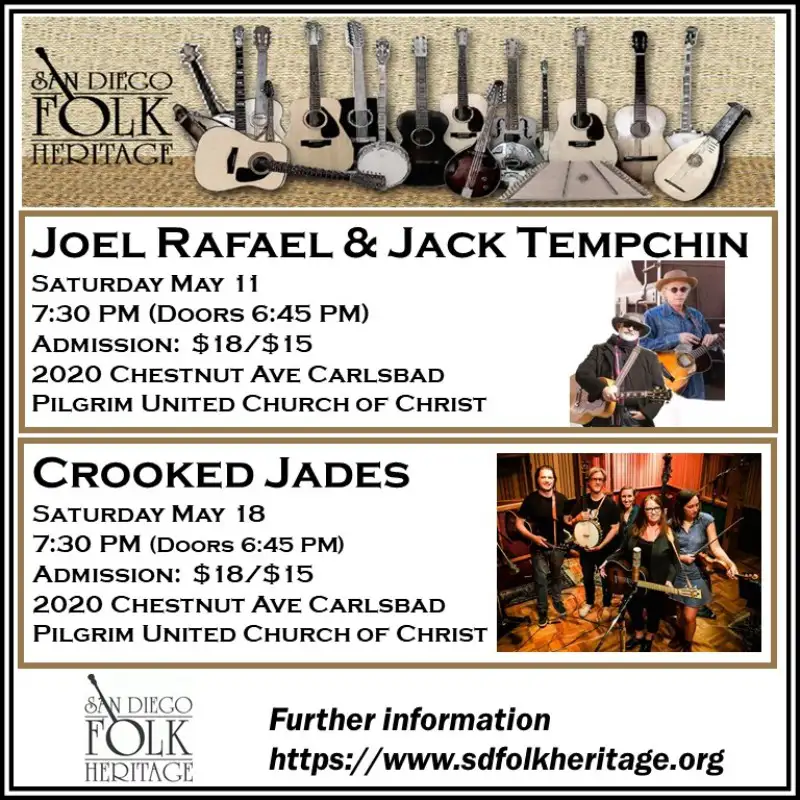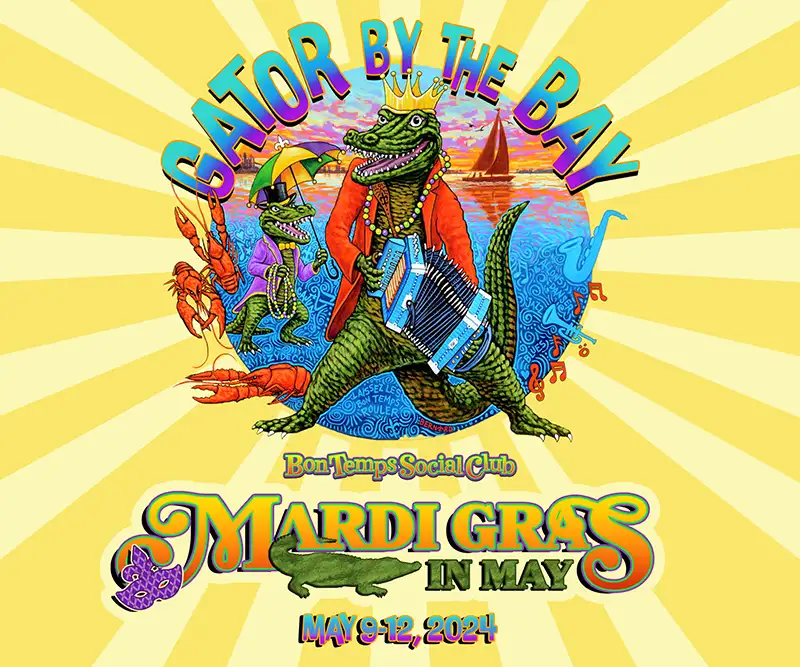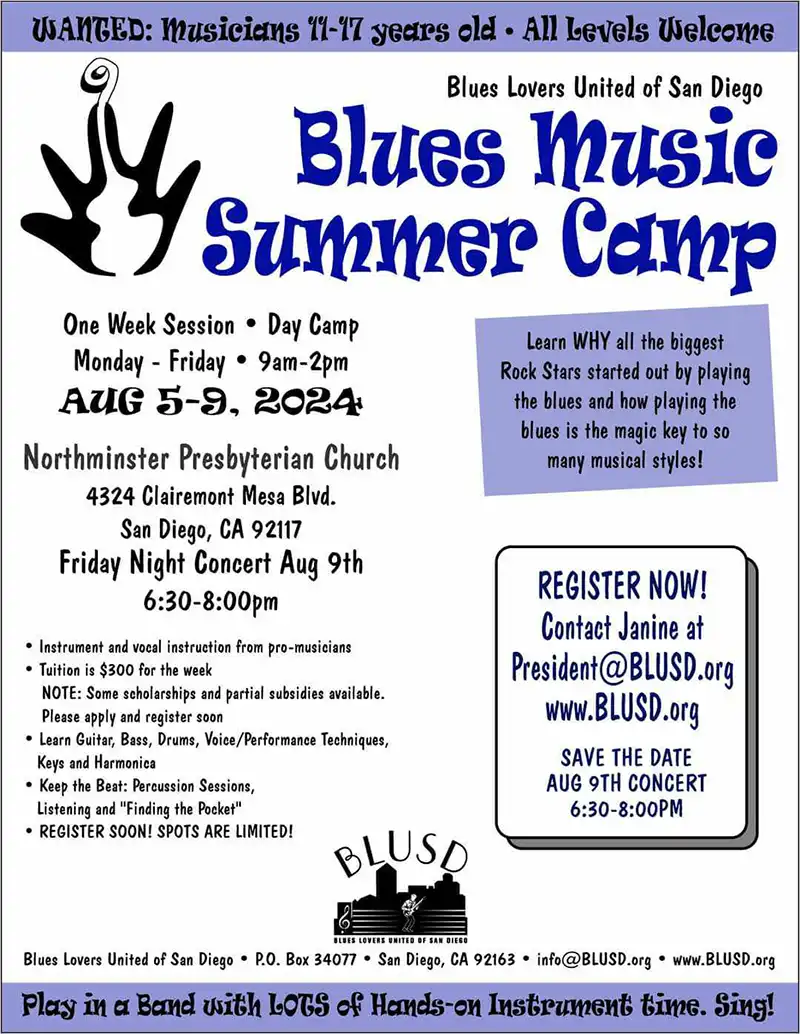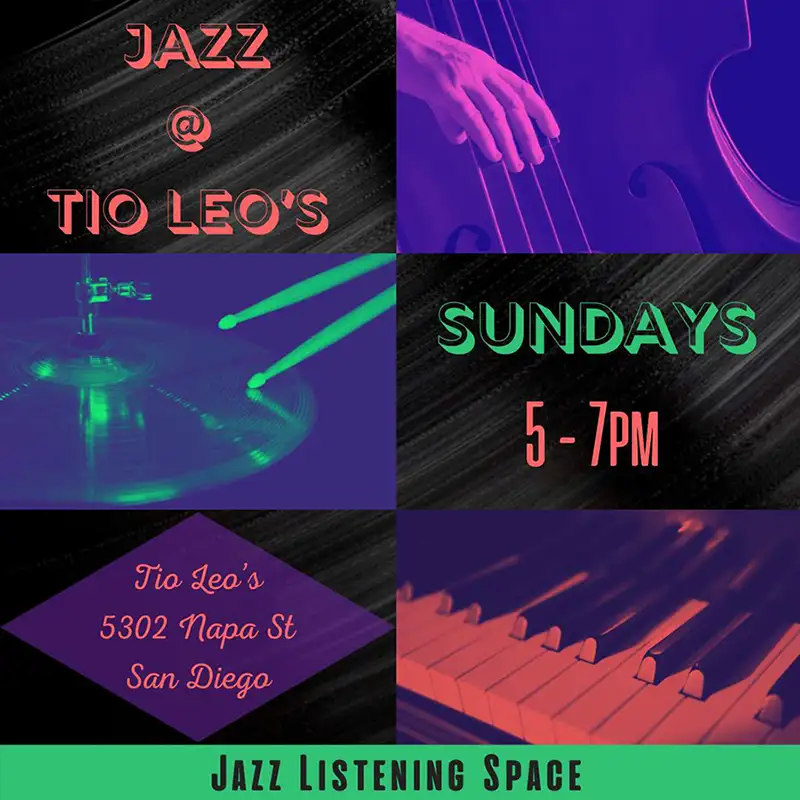Featured Stories
California Young Guns: The Birth of Country Rock
This is a three-part series, chronicling the birth and legacy of California country rock. Because the roots of this genre of country music go so deep, and its influence is so far reaching, it’s impossible to cover every detail. Also, the important influences, high-water marks, artists, and current progeny of the form are based on the writer’s own perspective. It is hoped that this series will give country rock some historical perspective and spur the uninitiated to pursue their own musical investigation of this bastard child of country music.
PART ONE
Throughout the 1960s and into the mid-1970s, California, the southern coastal region in particular, became the proving ground for a new, edgy, provocative, and youth-based country music revival. At the time, the interest among baby boomers for this type of music appeared to be a typical Southern California idiosyncracy. But it was destined to become a classic school of country, and things that are classic continue to influence and set a standard over time.
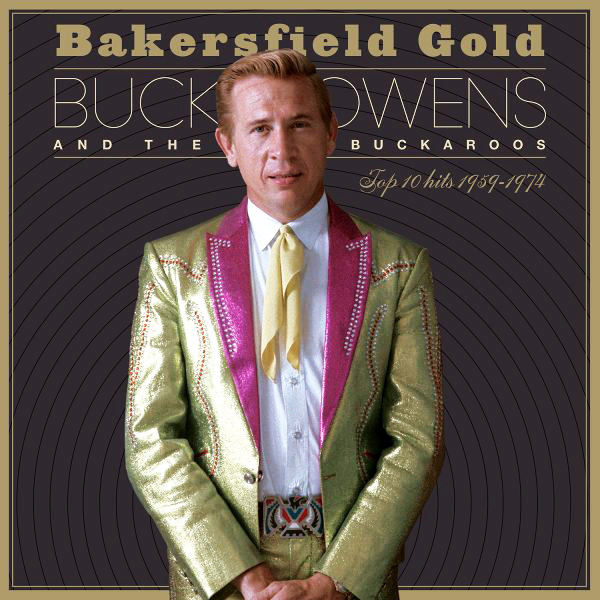
Buck Owens
County music historians generally trace country rock to California’s Central Valley/Bakersfield sounds of the Maddox Brothers and Rose, Tommy Collins, Wynn Stewart, Buck Owens, and Merle Haggard. Though these artists were not country rock per se, they would have a heavy influence on the country rockers. Their music was punchy and required a good, tight four- or five-piece band playing electric instruments. Bakersfield still possessed that honky-tonk twang that ran counter current to the slick, polished, and increasingly refined Nashville sound of the same era. In the late 1950s and throughout the 1960s, Nashville had forsaken much of the traditional country sound in an attempt to gain a wider audience. Back on the West Coast, however, “tele” riffs, pedal steel solos, banjos, and fiddles were still valued in country music. Bakersfield also added distinct electric bass and drums, which gave the music a certain hot-rodded feel.
Bakersfield acts and country rock were also similar in the way they drew from California’s rich cultural and musical heritage. Present in both were hints of California’s early Spanish and Mexican ranchero tradition. Present was the “Forty-niner” spirit of adventure and wanderlust. Present was the mixed pain and optimism of Dust Bowl refugees. Present was the boom-town spirit of WWII and the post-WWII era.
But there were also sharp differences between Bakersfield country music and country rock—not so much in the musical approach and instrumentation, but more in values and attitude. Indeed, to borrow a term from the time, there was a “generation gap” between the two. When analyzed closely, these differences can become more important than their similarities.
To begin, Bakersfield stood in proud defiance of Nashville’s control long before Willie and Waylon’s Texas outlaw movement of the 1970s. On the other hand, the young guns were indifferent to Nashville’s music machine; this in itself was quite a powerful statement.

Maddox Brothers and Rose
Bakersfield artists were often products of the Great Depression and the Dust Bowl migration of the 1930s. Country rockers on the other hand were more likely to be products of post-WWII affluence. Moreover, the music of Bakersfield had a ready audience in white, blue color, and working-class Californians. Contrast that to the young guns whose music was more egalitarian and whose long-haired life style drew fire from traditional country music fans.
The punch and grit of Bakersfield country could be traced to Elvis and other early rock pioneers. For that reason, a few musical historians have included Bakersfield country as part of the overall country rock movement. But it was the Beatles who would separate Bakersfield from the young guns. Indeed, it’s well known that Buck Owens was a Beatles fan, but more than that he was a Hank Williams fan. On the other hand, the Beatles were huge Buck Owens fans, even to the extent that they recorded “Act Naturally,” followed by their own country songs like “I Don’t Want to Spoil the Party” and “I’ve Just Seen a Face.” The point is that a Bakersfield artist like Buck enjoyed the Beatles, but their influence never became a major element in his music. The Beatles on the other hand would prove to be as important to country rockers as would the Bakersfield sound. Indeed, without either of the key ingredients of the Beatles or Bakersfield, country rock could never have been birthed.
PART TWO
At its inception, country had played a major role in rock ‘n’ roll music. Early rock pioneers like Elvis, Buddy Holly, Jerry Lee Lewis, Carl Perkins, and the Everly Brothers were all heavily influenced by country music. And how could they not be, considering their white, southern roots? Indeed, Sam Phillips’ Sun record label read like a Who’s Who of rockabilly.
Between 1959 and 1960 the first phase of rock ‘n’ roll had come and gone. Elvis was in the army, Buddy Holly was dead, Jerry Lee was in disrepute, and Chuck Berry was in jail. To fill the vacuum left by the absence of these giants, record companies manufactured the “teen idol.” At about the same time acoustic folk music was gaining popularity. Groups like the Kingston Trio; Peter, Paul, and Mary; the Journeymen; the Limeliters; and the New Christy Minstrels became an alternative to the teen idol syndrome. Though most of the music produced by these popular folk combos was highly commercial, it nevertheless provided a link to the music of serious folk artists, such as Jimmy Rodgers, Woody Guthrie, Ramblin’ Jack Elliott, and Bob Dylan.
And then there was bluegrass. Bluegrass, once considered a type of country music, had been shoved aside by Nashville in favor of its new slick, uptown country sound by the late ’50s. Gone from country radio were the sounds of fiddle, banjo, dobro, hot guitar, and high-lonesome harmonies. Though disowned by Nashville, bluegrass found a new audience among hard-core folkies.
What does this have to do with California country rock? Among the key figures of the California country rock scene, most would come out of folk or bluegrass circles. Roger McGuinn, Chris Hillman, Richie Furay, Gram Parsons, the Dillards, Gene Clark, Clarence White, Linda Ronstadt, Emmylou, et. al. were steeped in these musical traditions.
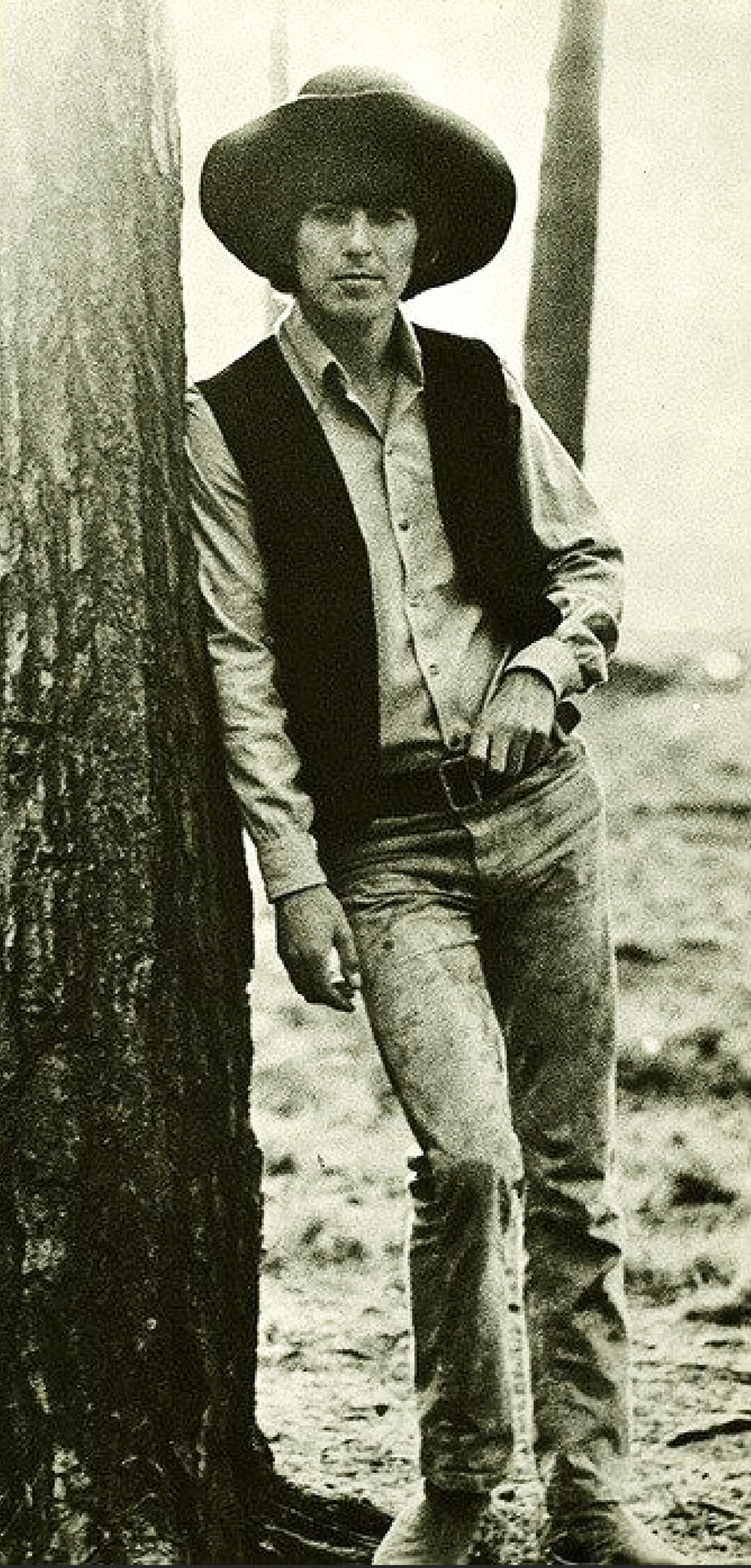
George Harrison
Now, to the influence of the Beatles. When the Beatles hit America in early 1964, it spelled the end for the acoustic folk scene. The Beatles reinvented rock ‘n’ roll by both borrowing from its past and creating a new future. As an electric band, the synergistic energy created by the Fab Four hadn’t been seen since the heyday of Elvis. But underlying the whole Beatle phenomenon was the band’s creativity. Because they wrote their own songs and developed their own sound, there was a solid core of strength, integrity, and creative depth, underneath their cute mop tops and cherubic features. Besides creating their own musical gems, the Beatles borrowed from America’s rock pioneers. The music of Carl Perkins and Chuck Berry was reintroduced to an American youth who had forgotten or were too young to appreciate country-laced rockabilly when it first appeared.
In response to the Beatles, American folkies formed their own electric bands. The Byrds, Lovin’ Spoonful, Mamas and Papas, and Buffalo Springfield are prime examples of America’s answer to the Beatles. And though these bands enjoyed commercial success, at their heart was the spirit of American folk. By the summer of 1965, Bob Dylan had gone electric and had become a rock icon.
By 1967 strains of country influence could be heard in the music of many of these American folk-rock acts—harmonies, instrumentation, bona fide country licks, rural imagery, and rhythms. Before long, even their dress hinted at at country as cowboy hats were seen perched atop the heads of Steve Stills, David Crosby, and Zal Yanovsky. Neil Young took to wearing a Buffalo Bill jacket. Beatle boots were replaced by cowboy boots. Soon albums contained flat-out country songs, such as the Springfield’s “A Child’s Claim to Fame” or the Byrds’ “Time Between.” The Lovin’ Spoonful got a top-40 hit with “Nashville Cats.” But these country cuts were not representative of Nashville at that time, rather they were akin to the punch and twang of Bakersfield.
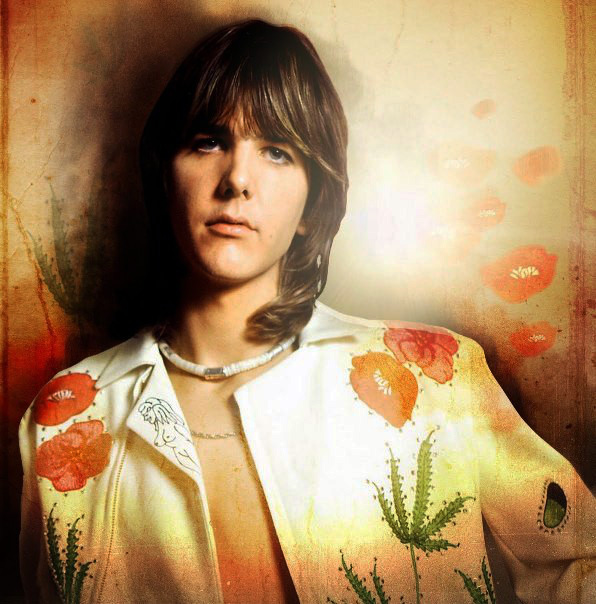
Gram Parsons
Also, in 1967, Gram Parsons and his International Submarine Band was in Los Angeles recording a complete country album, Safe at Home. Though Parsons had joined the Byrds by the time of the album’s release, it marked the first total country album recorded by a long-haired youth-based band. Also in that year Gene Clark released his first excellent solo album after leaving the Byrds, Gene Clark with the Gosdin Brothers. Though the album is more folk-rock than country, it is notable for boldly placing Clarence White’s country guitar licks and Doug Dillard’s banjo at the front of the mix.
Though these Parsons and Clark albums were fine works, they got little to no popular exposure. As such, these works had minimal impact on imparting the virtues of country music to a rock ‘n’ roll audience. And though the Beatles had played rockabilly and country before, they could get away with anything. Then, in 1968, the Byrds took the bold step in doing a complete country album, Sweetheart of the Rodeo. This was the first attempt by a renowned and highly respected rock band to commit a total album to country music. Though the Byrds had strong country champions in Chris Hillman and Gene Clark, it was with the exit of David Crosby and the addition of Gram Parsons that the group became a real country band.
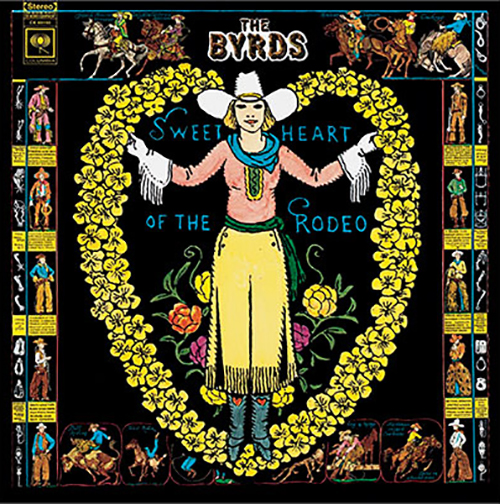
Sweetheart of the Rodeo album.
Roger McGuinn once described Byrds’ albums as “electronic magazines” with Sweetheart being a special edition. Certainly the band had help from some great country musicians on Sweetheart as the credits testify; nevertheless, the album is unmistakably the Byrds. The album is a potpourri of classic country styles and themes. Optimistic gospel songs; melancholy drinking songs; and songs about outlaws, prison, and cowboys are all on Sweetheart. Styles ranged from proto-country Appalachian folk to 3/4 time ballads, to upbeat 4/4 rockers, to honky tonk shuffles, to bluegrass. Though the Byrds borrowed songs from country artists like Merle Haggard and the Louvin Brothers, they also borrowed from Dylan. By doing this, the album had the ability to bridge their Baby Boomer listeners to more traditional country.
Parsons also contributed a couple of fine country songs for Sweetheart. This again pressed upon the listener that country music could be made for an under-30 audience. Ironically, Parsons believed the new album could be a vehicle for winning over the older and established country audience as well.
Sweetheart was a great traditional country sampler, while providing a promise as to the potential for a hipper form of country music. It was the Sweetheart Byrds that gave the green light to all the country rock bands that would follow.
PART THREE
By 1968 American rock was undergoing critical changes. In the midst of all the psychedelic hoopla, Dylan’s widely acclaimed John Wesley Harding was released This return to his folk troubadour role foretold the death of psychedelia.The Lovin’ Spoonful, Mamas and Papas, and Buffalo Springfield, all vanguard groups, would break up. Gram Parsons, soon to be followed by Chris Hillman, would leave the Sweetheart-era Byrds, while McGuinn would soldier on with a completely new line up. 1968 would also be the year that the term “country rock” was coined and along with this new L.A.-centered movement, a plethora of groups would form or reformulate.

Gene Clark and Doug Dillard, 1968.
In the same way that today’s alternative country bands have vast differences with musical interpretation, approach, and delivery, country rock bands during its infancy period—1968-1969—were very different as well. The music of that time provides a still-useful template for identifying the genre’s sound. In November 1968, Doug Dillard and Gene Clark, late of the Dillards and Byrds respectively, released their debut album, The Fantastic Expedition of Dillard and Clark. Much has been said about the modern “new grass” sound. But Dillard and Clark were arguably the first to reinterpret classic bluegrass to produce a treasure of new bluegrass songs. On the other hand, the Dillards left their pure bluegrass base with the release of Wheatstraw Suite in December 1968. This innovative album merged the band’s bluegrass virtuosity and flawless vocals with electric rock instrumentation, orchestration, and country picking. Though both albums are quite different, their music has held up as examples of country rock at its best.
Soon after leaving the Byrds, Chris Hillman and Gram Parsons would partner up again to form the Flying Burrito Brothers. In the winter of 1968 they would release their first and greatest album, The Gilded Palace of Sin. With its blend of country and R&B, the album was a vehicle for Parsons’ version of “cosmic American music.” Songs on the album ran the gamut from sassy, up-tempo country rock to emotive R&B interpretations, to songs of heartbreak and disappointment, to social/political commentary. Of the album’s 11 songs, its nine originals were brilliant and often possessed insight built on the pain of experience.

The Flying Burrito Brothers at the photo shoot for The Gilded Palace of Sin album, 1969.
Soon after the release of the Burritos’ debut album, Poco released its first. With the disintegration of the Buffalo Springfield, Richie Furay and Jim Messina would pursue their vision of country music with rock sensibilities. Their album, Pickin’ Up the Pieces, was perky and optimistic as contrasted to the seriousness of the Burritos. Indeed, both bands had distinct views of this new music. While Poco viewed the Burritos as more traditional country, the Burritos saw Poco as too whimsical.
The re-formed Byrds were also busy in 1969. With ace bluegrass and country picker Clarence White, the band released two new albums that year. The first, Dr. Byrds and Mr. Hyde, did not attempt to blend country and rock together into its songs; rather, the album consisted of separate rock, country, folk, and even blues tracks. But the album’s highlight was the Roger McGuinn-Gram Parsons-penned country rock gem “Drug Store Truck Drivin’ Man.” This young-gun classic lampooned Ralph Emery, Nashville’s premier disc jockey of the day. Emery had used his radio show to attack the Sweetheart-era Byrds as “hippie interlopers” prior to their guest appearance on the Grand Ole Opry. The Ballad of Easy Rider, released late in the year, provided a much better integration of country and rock styles into its song selection. This album is considered by many Byrds watchers as one of the group’s best vinyl efforts.
During this nascent period of country rock, other young-gun artists and outfits would flesh out the new movement. By the end of 1969, quality works were put out by former teen idol Rick Nelson, ex-Monkee Mike Nesmith, Hearts and Flowers with former San Diegan Larry Murray, and transplanted Canadians Ian and Sylvia Tyson. And seemingly, though in a tacit way, Dylan appeared to give his blessing to the movement with the release of Nashville Skyline. Ironically Dylan, voice of radical change and restless youth, worked well in Nashville and even won the admiration of country icon Johnny Cash. On the album Cash sings duet with Dylan on “Girl from the North Country.” Later Dylan would guest on Cash’s popular television show.

Bob Dylan
But by 1971 the country rock movement began to hit snags. First, the music could never overcome the stigma that it was too country for rock and too rock for country. This resulted in little to no radio play on either format. Though Nashville Skyline was a successful Dylan effort, its popularity did not trickle down to the California bands. In efforts to appeal more to young audiences, Poco and the Byrds resorted to long-winded rave-ups that aped the excesses of rock. Though these jams may have been of interest in live shows, they only took up valuable space on vinyl. In the midst of these doldrums, partnerships and group cohesiveness began to dissolve. Gene Clark split from Dillard and Clark. John York was squeezed out of the Byrds. Gram Parsons’ demons, addictions, and erratic behaviors alienated him from his band mates and he was sacked. Jim Messina left Poco to form Loggins and Messina. The fate of country rock looked bleak. The movement appeared to be floundering, but actually it was on the verge of its greatest period.

Linda Ronstadt, 1968
By January 1972, Linda Ronstadt was touring in support of her new album, simply titled Linda Ronstadt. Going solo in 1968, her early efforts were a mixture of folk, pop, and some memorable country rock, such as her classic rendition of “Silver Threads and Golden Needles.” Though never a songwriter, Ronstadt was a master of interpretation and delivery. In classic country rock fashion, she included songs on her new album as diverse as such country standards as “I Fall to Pieces” and “Crazy Arms” to songs by long-haired firebrand Neil Young and relative new comer Jackson Browne. This album launched Ronstadt into country rock stardom.
In 1968, the Nitty Gritty Dirt Band left its jug band beginnings and reinvented itself as an innovative and formidable country rock outfit. With the 1968 release of Uncle Charlie and His Dog Teddy, the band took its place among the country rock elite. In 1972 the group would release its landmark album Will the Circle Be Unbroken. Though Dylan connected himself to many in the Nashville establishment with Nashville Skyline, the Dirt Band closed the considerable gap between Nashville and the music of West Coast young guns with this new work. The album featured such hallowed country luminaries as Roy Acuff, Earl Scruggs, and Mother Maybelle Carter as well as many others. The album was embraced by young back-to-the-country commune dwellers as well as fans of the Grand Ole Opry. The Nitty Gritty Dirt Band continues to be recognized for its musical excellence and longevity.
Just prior to the dissolution of the Chris Hillman-led Flying Burrito Brothers, Hillman and certain other band members happened upon a pretty young girl singer, pouring out her heart to a sparse and disinterested audience in a Washington, D.C. coffeehouse. The young singer was Emmylou Harris. Hillman connected her with Gram Parsons. Harris became Parson’s harmony singer and junior partner on his two legendary solo albums GP (1972) and the posthumous Grievous Angel (1974). Following Parsons’ death in 1973, Harris forged her own long-lasting and prestigious career, using Parson’s template for country rock.
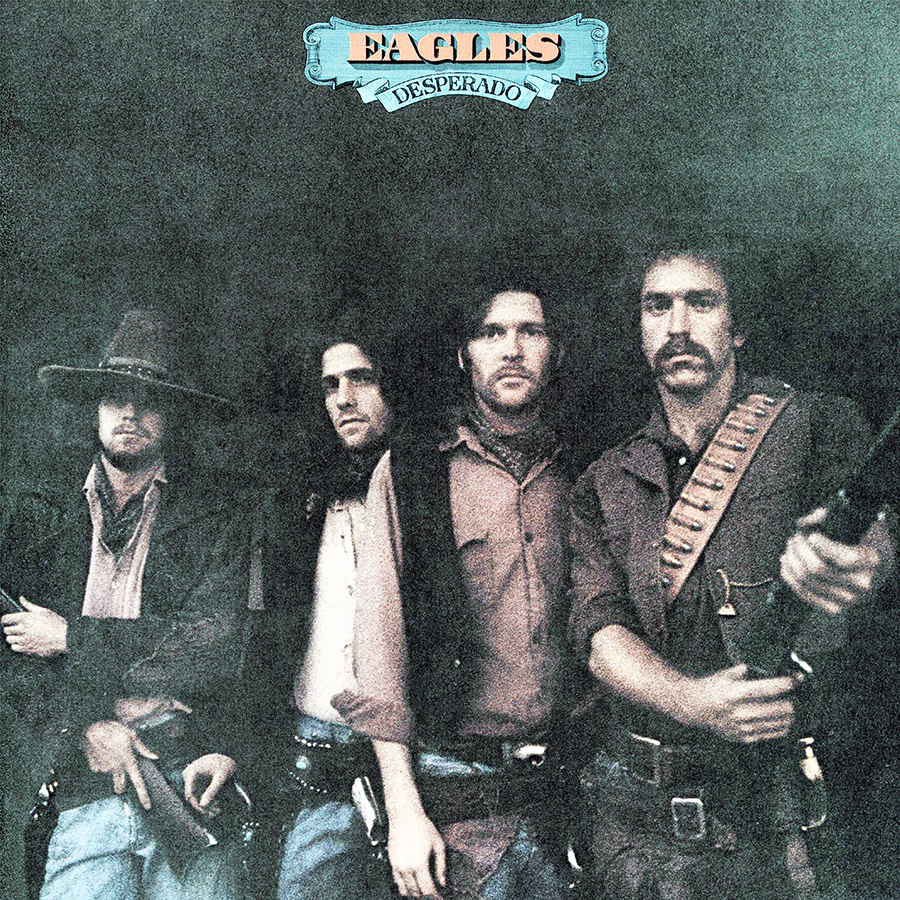
The Eagles
In 1972 the Eagles began their huge career with their debut album, Eagles. The original four brought together their considerable talents as players, singers, and tunesmiths and a wealth of experience with folk, rock, country, and bluegrass. Both Bernie Leadon and Randy Meisner participated in the first country rock onslaught. Leadon was a member of Hearts and Flowers, a Dillard and Clark expedition player, and a Flying Burrito Brother. Meisner was a charter member of Poco and served in Rick Nelson’s Stone Canyon Band. Don Henley came to California via Texas as drummer and singer for Shiloh, a southern-fried country rock band. Glenn Frey served tenure with J.D. Souther in Longbranch Pennywhistle, an easy-listening soft-rock duo with country influence. The original Eagles comprised Linda Ronstadt’s crack back-up band at one point.
The Eagles learned from the mistakes of their country rock predecessors. To avoid the tag of being too rock for country and too country for rock, there would be no pedal steel guitar in the lineup. Leadon would approximate that sound with his string-bender “Tele.” With country rock jewels like “Take It Easy” and “Peaceful Easy Feeling,” it was easy to peg the band as country rock, but the music on Eagles was a mix of various styles. Their eclectic blend appealed to a listening public who wanted more punch than that offered by the many mellow singer-songwriter acts of the day, while it also appealed to fans who felt alienated by the pretentious overstatement that much of rock had become.
When Bernie Leadon and Randy Meisner departed, the Eagles lost much of its country rock flavor. But country rock pushed ahead. Rodney Crowell and Ricky Skaggs emerged from Emmylou’s shadow to become young-gun legends themselves. The early ’80s saw the advent of “cow punk” outfits like the Long Ryders, Lone Justice, and Jason and the Scorchers. Dwight Yoakam had roots in that scene as well. From ’86 to ’90 country rock, California style, finally gained popular radio exposure. Though many of these groups and artists were not California based per se, their music was strongly influenced by the California country rock sound. Highway 101, Rosanne Cash, Southern Pacific, Foster and Lloyd, Bailey and the Boys, and, of course, Chris Hillman’s Desert Rose Band were a few of the bands that represented this sound. Steve Earle, the ultimate rebel rocker, also hit the airwaves during this time.
By 1990, a counterfeit “country rock” began to replace the real McCoy. Many simply turned off their radios and abandoned this commercialized nonsense to the boot-scooting masses. The descent of country radio continues to this day. “Hunks,” “babes,” and the “show” now drive the bus, while quality and integrity take the back seat. Still, a parallel universe of great country music exists, sometimes referred to as “alternative country.” Whatever it’s called doesn’t really matter. Indeed, many of the genre’s pioneers hated the term “country rock” from the get-go, due to its limitations in describing the content and format of the music. Perhaps it’s better described as the attitude and musical interpretation of the players. Today’s alternative country/country rock might have a classic western swing beat, a jazzy flare, a blue-collar Bakersfield edge, a Gen X angst, or a greasy rockabilly feel. Still, in all those incarnations, the legacy of California’s young guns rides on.
Author Lyle Duplessie was a founding member of the San Diego Troubadour. In the beginning, he wrote practically all the articles (that’s when the Troubadour was eight pages). This article is just an example of his excellence in writing and I’m very pleased to rerun it here. It’s fun to read, informative, compelling. He was always fascinated with music history and would find “under-the radar” topics to write about. We all miss him.
Reprinted from the San Diego Troubadour, January through March 2002.


